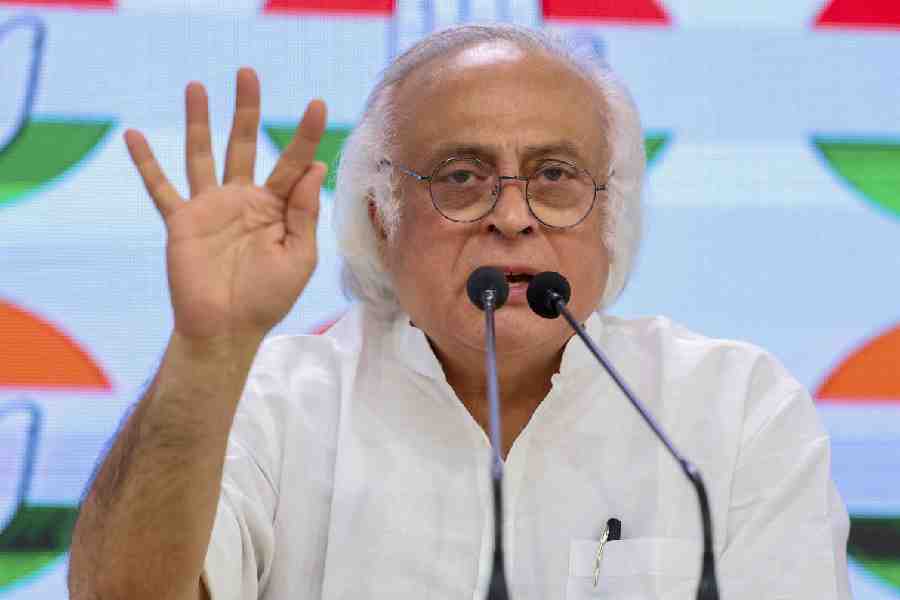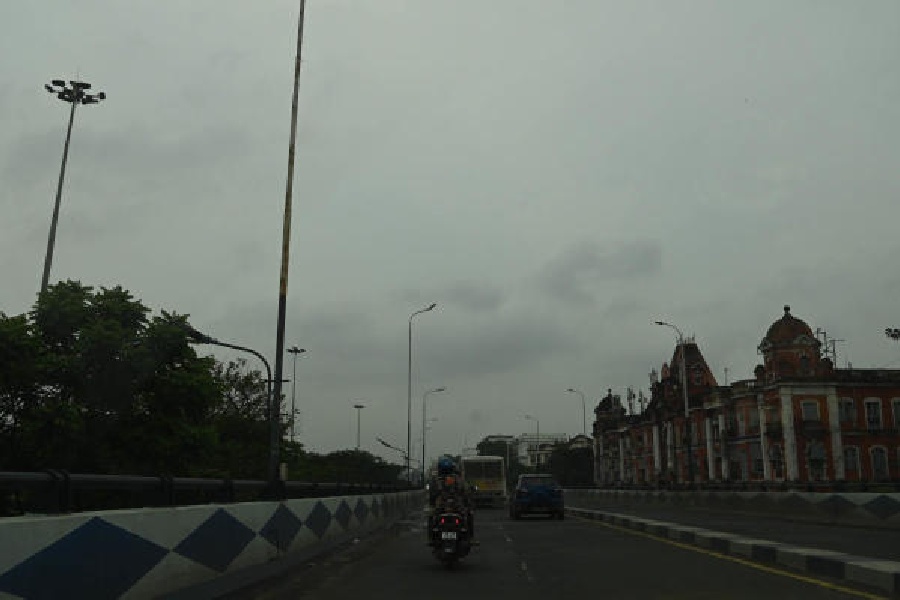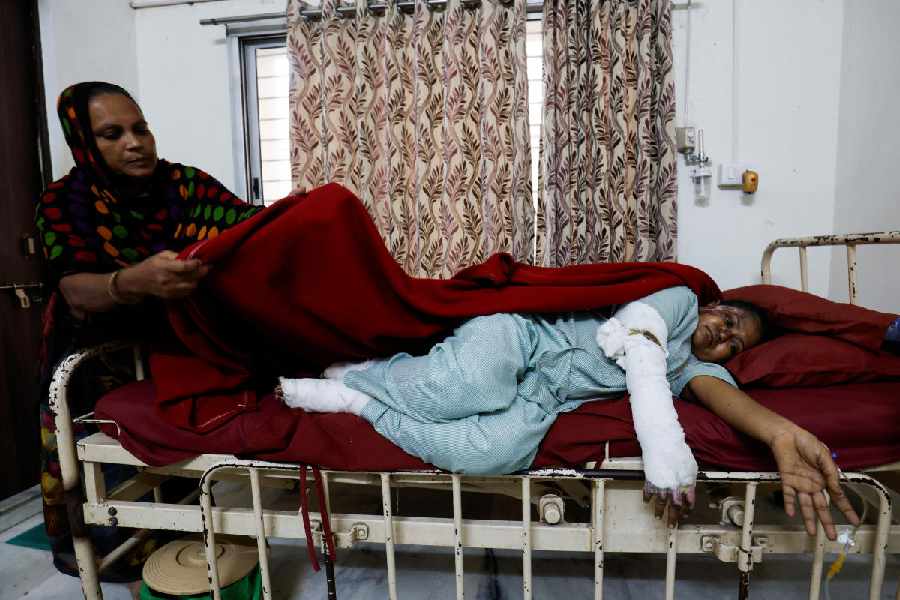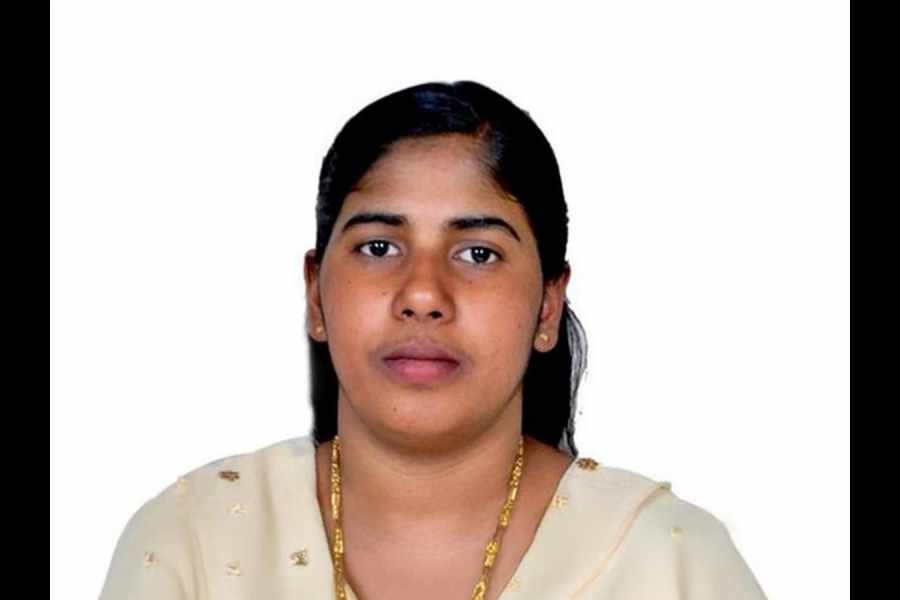 |
| The Raj Bhavan, in 1988, with Russian dancers celebrating the New Year. (Below) Hogg Market in 1965 |
 |
As calcutta present raises a toast to yet another round of revelry to ring in the New Year, it is time to turn the pages and take a peek at Calcutta Past; with chronicles of of European visitors serving as time machines.
Celebrations initially would take place in closed circles ? Old Court House, Government House, Great Eastern Hotel being prominent destinations; then they gradually spread to open spaces like the Maidan to include the man on the street.
The seat of governance
The Calcutta Gazette of January 1803 gives a detailed account of the illuminations and fireworks which formed part of a grand f?te, the first public entertainment held in Government House (Raj Bhavan), hosted by Lord Wellesley to commemorate the Peace of Amiens. The evening opened with a ball, drawing some 800 guests, including the judges of the Supreme Court, several natives of rank and the Danish Governor of Serampore. Lord Wellesley reached at 10 o?clock. Soon after, dancing commenced, and continued till midnight. After that, the company proceeded to supper in the marble hall, where six ranges of tables were ?covered with a profusion of every delicacy?. ?The remarkable objects were a galley bringing the intelligence of the Peace: a frigate decorated with colours; some curious Egyptian obelisks covered with hieroglyphics, and a temple emblemetical of the Peace, and of the gallant exploits of our Naval and Military Commanders during the late war?? Supper was followed, at one o?clock, by illuminations, which rising in pyramidal forms 36 feet in height was continued to ?the Dhurromtolla on the left, and to the Chandpal Ghaut on the right?. The rockets discharged from the mortars of the Fort ramparts were a success, but for the fact that ?the populace stole much of the oil?, as one of the guests, Lord Valentia, complained.
The grand ball was the first of a long series of entertainments that the Governor House saw since then.
The dance floor
Those shaking a leg or two at the discos today may sample this from Kathleen Blechynden?s book Calcutta Past and Present, published exactly a century ago. ?Dancing was always a favourite amusement in Calcutta and the ladies being in the minority did their best to redress the balance by each dancing as many dances as they could possibly crowd into one night.? The dancing went on from nine pm till five am!
If a hangover is what you get after a night out at Tantra, in the early 19th century Calcutta the long-term after-effect would be consumption. Says Lord Valentia: ?Consumptions are very frequent among the ladies, which I attribute in a great measure to their incessant dancing??
Much of the dancing took place in Old Court House (giving its name to the street which houses the Great Eastern Hotel at present. It was demolished in 1792), which for over 30 years, was the scene of most public entertainments and assembly balls. ?Towards the close of the (18th) century the old house became unsafe; society, too, had begun to break up into classes, and subscription assemblies went out of fashion. Entertainments of every kind were transferred to private houses, and hosts, led by the Governor-General in his new and splendid Government House, gave weekly receptions, besides large dinner parties, balls, and f?tes.?
As Britain spent thousands of pounds on hostility in the World War, the Town Hall Christmas ball rallied around to raise funds, but for the war itself. A far cry from the call of relief.
 |
| Great Eastern Hotel (right), the scene of the biggest public festivity |
At the races
Racing was considered ?Calcutta?s biggest winter time attraction?, in the words of R.J. Minney, author of Round About Calcutta (1922). For months, women studied pictured lists from Piccadilly, searching for the right headgear and dress to wear at the Races. ?New milliner?s signs adorn the city?s streets, as short-lived as the flies, just for the Racing season. The Indian has unpacked his shawls of many colours only to sport it on the crowded course where the patterned shoulders work a mosaic that is hardly ever seen in a human picture.? People flocked here from the four corners of the world to enjoy the thrills and frills of racing. But it was the pleasant climate at this time that was considered the biggest draw.
Hotel high
Originally styled Wilson?s Hotel, the hotel had a custom to host Christmas Eve celebrations in the large central hall on the ground floor, which for that one special occasion, was dubbed the Hall of All Nations.
?The hall,? writes Montague Massey in his 1918 book Recollections of Calcutta for over Half a Century, ?was beautifully decorated and festooned with flags of all nations and brilliantly illuminated. Shortly after dark, the whole of the elite of Calcutta society trooped in?? Confectionery and cakes of different designs and sizes made on the premises, bon bons, crackers, sweets and fancy articles suitable for presents were heaped there. Gifts and pleasantries were exchanged. When people left for dinner, it ?did not by any means bring the tamasha to a close, as later in the evening the elite of Dhurramtollah and Bow Bazaar made their appearance, the ladies decked out in all their gorgeous Christmas finery, and no doubt they enjoyed themselves as much as their more favoured and fortunate sisters of the haut ton.?
From the beginning of the 20th century, the Grand too caught on. The native princes from Cooch Behar to Kashmir descended upon the city and their visits were much written about.
On the stage
If food is the season?s flavour of Park Street today, it would have been the stage in the mid-19th century. Just as the Corinthian Theatre went to town with their stage show Cinderella (whose posters were said to have created a sensation), Lewis Theatre Royal trumpeted its production Blue Beard. Both drew full houses.
On the greens
The Maidan, since the late 19th century, was fast becoming the site for a veritable carnival. In Eastern Interludes: A social history of the European Community in India, R. Pearson inventories German circuses, pantomimes, opera and melodramas in Hindi and Bengali and much more. Professor Vaneck was casting a spell on viewers in his sorcerer?s robes. The decapitation trick was his pi?ce de resistance. The Bombay Theatre Company staged a Hindi Hamlet. Haamstom?s Circus pitched a huge tent and a stage outfit advertised: ?The Quaints, direct from the West End after 300 performances, including one before their majesties the King and the Queen.?
Charley?s Aunt and Ibsen?s A Doll?s House were the picks of the season. There were ?bioscopes that worked by electricity?. Pearson writes: ?A whiff of adventure was also injected by Dr Simpson, the meteorologist who accompanied (Robert Falcon) Scott on his famous Antarctica expedition. (His) incredible experiences were unveiled... before Calcuttans on a chilly Christmas evening, with slides, illuminating his unique talk. At the same time, the electric bioscopes bared the ravages of the First World War.?
On a shopping spree
In early 20th century, the confectioners were no less experimental than their counterparts a century later. A Monster Cake, created by a hotel, made the headlines, ?distinguished by its colossal proportions and civic decorations?.
Hall & Anderson, Whiteway Ladlow and Army & Navy Stores bustled with shoppers. The showcase would store ?Algerian onyx with engraved gilt mounts, jewel caskets in rich silk velvet, ... silver-plated mounts,... ornamental ink stands, tourists? companions, oxidised tobacco jars...?
At the turn of the century, the Bengali plunged into the festivities of the Burra Din with the enthusiasm of their European counterparts. If the aristocrats thronged the departmental stores, the Calcuttans flocked to the Stuart Hogg Market (New Market). Pearson writes: ?Wardrobes were restocked with the latest European styles; from frameless American pince-nez to gramophones with conical horns, opera clocks, model hats, fur collarettes, manicure sets, pocket watch and Gladstone bags? seamsters raced with the clock stitching fashionable dresses (priced at Rs 30) for the hall and lev?e at Government House.?
As socialites crowded Firpo?s, Peliti and Wallace?s restaurants, Christmas was the balm that healed the scars of the wars. A catalogue of a classy store would read like this: Yorkshire pudding: Re 1 per pound, turkeys: Re 1 ? 8 annas, fowls: 12 annas, fruit and raisin cake with 5 lb almond: Rs 5. English beer and Scotch ?hardly hurt the pocket?.
By the river
At the stroke of midnight on December 31, the steamers would hoot to welcome the New Year, a practice followed even today. At the Man O? War jetty, by the Fort William, a warship would dock every New Year?s Day. Manned by British soldiers, the ship would be open to natives for a free dekko. Band parties would come marching up from Harrison Road to the European localities and play in front of houses of eminent citizens. A handsome bakshish would be the order of the night. This tradition continued till after Independence.










